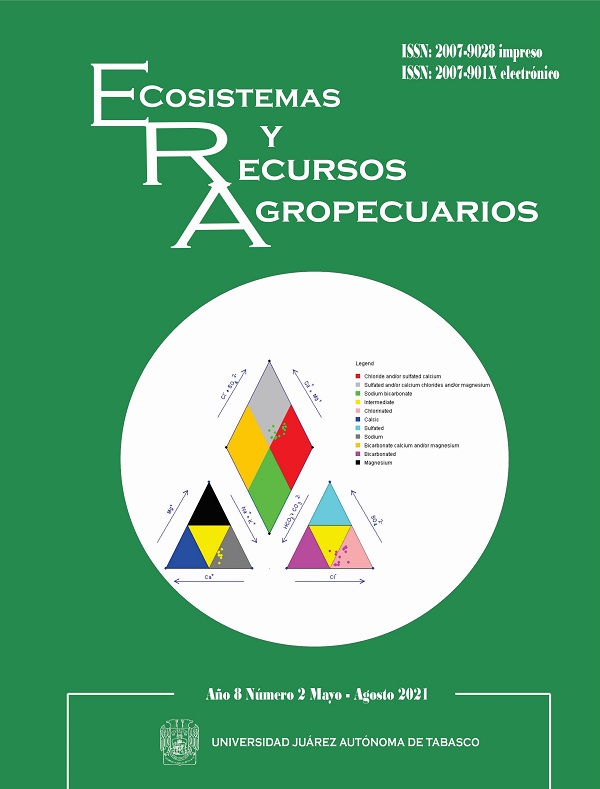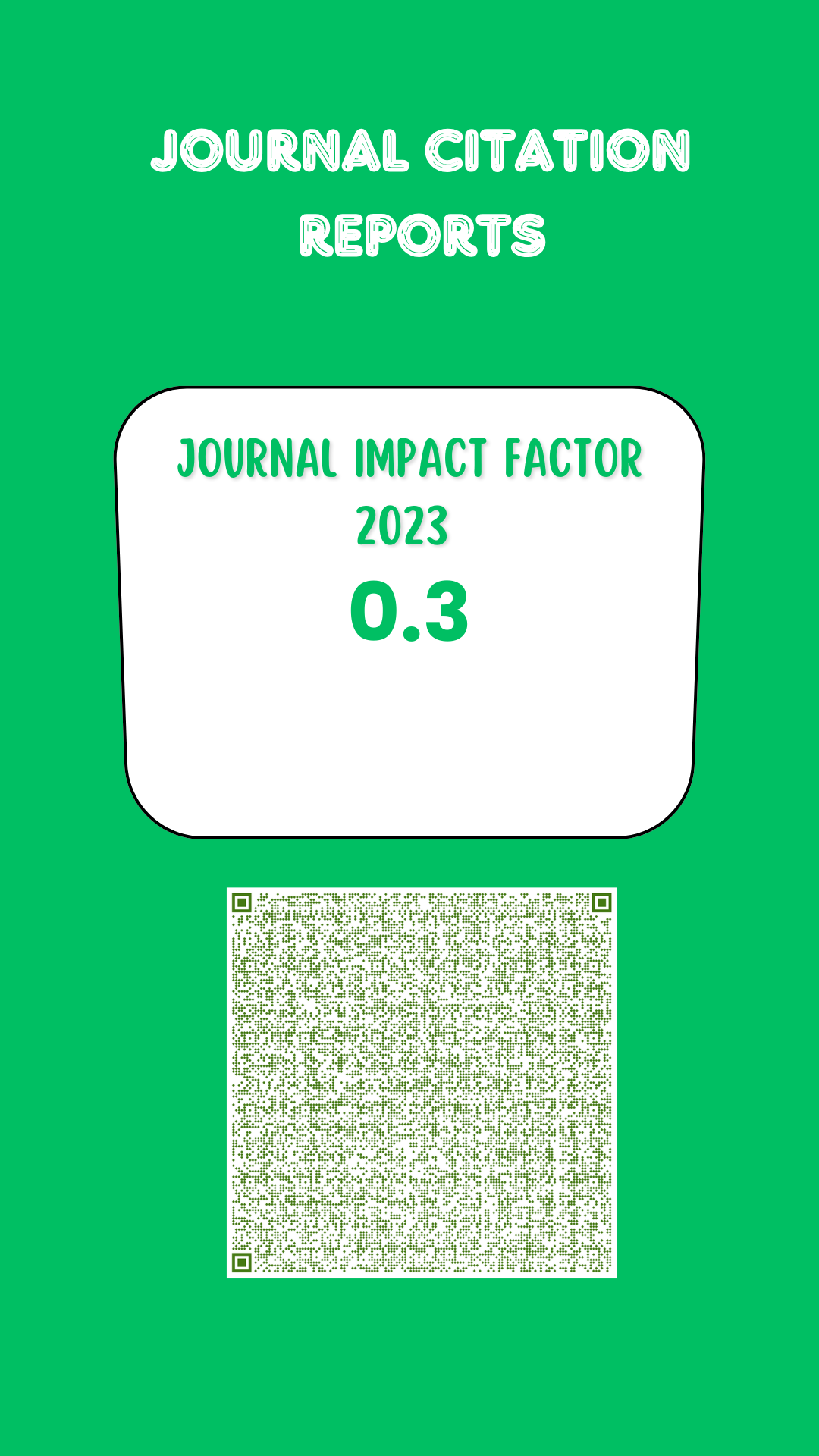Risk of contamination of phreatic aquifer with pesticides in the basin of Ludueña stream, Argentina
DOI:
https://doi.org/10.19136/era.a8n2.2688Keywords:
pesticidas, cuenca rural, factor de retardo, factor de atenuación, acuíferos freáticosAbstract
The objective of this work was to evaluate the risk of contamination of phreatic aquifer by the use of pesticides in the main crops within the basin
of the Ludueña stream, Santa Fe, Argentina. Thirteen cartographic units (CU)
formed by five soil series were evaluated. Use strategies for the fourteen most used
pesticides in main crops in the basin were investigated. Attenuation Factor (AF) and Retardation Factor (RF) of the pesticides in the series and CU were calculated by applying Integration of Environmental Risk Indices (IERI). The results of RF
by mobility and AF were classified by the probability of leaching. The average net water recharge value used for the calculation of AF was 1.2 mm d?1, and
georeferenced maps were constructed for each most mobile herbicide, insecticide and fungicide in the C horizon of the CUs. No clear trend was found in the mobility of pesticides in A, B and C horizons of the five soil series. Herbicides were more mobile than insecticides and fungicides. Regarding the AF, it was lower in the C horizon increasing the risk of phreatic aquifer contamination, and no clear difference was observed between the horizons A and B. Different risks of pesticide leaching were determined in the different environments of the basin. The applied index that considers the retardation and attenuation of the pesticide dynamics was useful to evaluate these risks.
Downloads
References
Arregui MC, Grenón DA, Sánchez DE, Ghione J (2013) Evaluación del riesgo de impacto ambiental de plaguicidas en cultivos anuales del centro de Santa Fe. FAVE Secc. Ciencias Agrarias 12(1): 13-20.
Bedmar F, Costa JL, Gimenez D, Daniel P (2013) Comparación de dos métodos de obtención de índices para la estimación del riesgo de lixiviación de plaguicidas en dos perfiles de suelo. Agriscientia 30 (2): 69-78.
Bedmar F, Gianelli VR (2014) Comportamiento de herbicidas en el suelo. En: Fernández, O.A., Leguizamón, E.S., Acciaresi, H. (Eds.) Malezas e Invasoras de la Argentina. Tomo i: Ecología y manejo. 1.ª ed. Bahía Blanca, Editorial de la Universidad Nacional del Sur, p. 361-389.
Bedmar F, Gianelli VR, Angelini H, Viglianchino L (2015) Riesgo de contaminación del agua subterránea con plaguicidas en la cuenca del arroyo El Cardalito, Argentina. RIA. Rev. Investigación Agropecuaria 41 (1): 70-82.
Bernard H, Chabalier PF, Chopart JL, Legube B, Vauclin M (2005) Assessment of herbicide leaching risk in two tropical soils of Reunion Island (France). Journal Environmental Quality, 34: 534-543.
Birkhofer K, Diehl E, Andersson J, Ekroos J, Früh-Müller A, Machnikowski F, et al. (2015) Ecosystem services current challenges and opportunities for ecological research. Frontiers in Ecology and Evolution 2: 1-12.
Bockstaller C, Guichard L, Makowski D, Avelin A, Girardin P, Plantureux S (2008) Agri-environmental indicators to assess cropping and farming systems. A review. Agronomy for Sustainable Development 28, 139–149.
Bonel BA, Montico S, Di Leo NC, Denoia JA, Vilche MS (2005) Análisis energético de las unidades de tierra en una cuenca rural. FAVE, Secc. Ciencias Agrarias 4, 37-47.
Cáceres LM (1980) Caracterización climática de la provincia de Santa Fe. Ministerio de Agricultura y Ganadería, Provincia de Santa Fe, Argentina. 35 pp.
Dalpiaz MJ, Andriulo A (2017) Comparación de índices de riesgo de lixiviación de plaguicidas Ciencia del Suelo 35 (2): 365-376.
Devillers J, Farret R, Girardin P, Rivière JL, Soulas G (2005) Indicateurs pour évaluer les risques liés à l’utilisation des pesticides, Lavoisier, Londres, Paris, New-York. 280 p
Ferraro DO, Gherza CM, Sznaider GA (2003) Evaluation of environmental impact indicators using fuzzy logic to assess the mixed cropping systems of the Inland Pampa, Argentina . Agriculture, Ecosystems and Environment 96 (1-3): 1-18.
Girardin P, Bockstaller C, Van der Werf H (1999) Indicators: tools to evaluate the environmental impacts of farming systems. Journal of Sustainable Agriculture 13: 5-21.
Gustafson DI (1989) Groundwater ubiquity score: a simple method for assessing pesticide leachability. Environ. Toxicology Chemical 8: 339-357.
INTA (2015) Los plaguicidas agregados al suelo y su destino en el ambiente. INTA Ediciones, 1º Edición. 73 pag. Balcarce, Bs As. Compiladores: Aparicio, V.; De Gerónimo, E.; Hernández Guijarro, K.; Pérez, D.; Portocarrero, R.; Vidal, C.
INTA (2018) Guía de series de suelos. Estación Experimental Agropecuaria Rafaela. Consultado: 19/01/18. Acceso: http://rafaela.inta.gov.ar/mapas/suelos/__series/index.htm.
Jobbágy EG (2011) Servicios Hídricos de los ecosistemas y su relación con el uso de la tierra en la llanura chaco-pampeana. En Laterra P (Ed.) Valoración de Servicios Ecosistémicos Conceptos, herramientas y aplicaciones para el ordenamiento territorial. Ediciones INTA, pp 163-183.
Khan MA, Liang T (1989) Mapping pesticide contamination potential. Environmental Management 13 (2): 233-242.
Maitre MI, Lenardon A, Lorenzatti E, Enrique S (2004) Adsorción-Desorción del herbicida glifosato en dos suelos del litoral argentino. XIX Congreso Argentino de la Ciencia del Suelo. Paraná, Entre Ríos.
Montico S (2013) Vulnerabilidad de unidades de paisaje en una cuenca de Santa Fe, Argentina. Revista del CURIHAM 19:15-24.
Montico S, Di Leo NC (2015) Riesgo ambiental por pesticidas en una cuenca del sur de la provincia de Santa Fe, Argentina. Revista Internacional de Contaminación Ambiental 31 (2): 165-172.
Montico S, Denoia JA, Berardi JÁ (2015) Impacto y riesgo ambiental del uso de pesticidas en cultivos del arroyo Ludueña, Santa Fe. Cuadernos del CURIHAM 51:, 73:79.
Montico, S, Magrí L, Denoia J (2015) Impacto ambiental del uso de pesticidas en la cuenca del arroyo Ludueña (Santa Fe, Argentina). Revista Ciencias Agronómicas XXV - Año 15 - 7-17.
Montico S, Di Leo N, Bonel B, Denoia J. (2017). Riesgo ambiental por el uso de fitosanitarios en cultivos anuales de la cuenca del arroyo Ludueña. Cuadernos del CURIHAM 23: 1-9.
Oerke EC, Dehne HE (2004) Safeguarding production losses in major crops and the role of crop protection. Crop Protection 23: 275-285.
Rao PSC, Hornsby AG, Jessuep RE (1985) Indices for ranking the potential for pesticide contamination of groundwater. Soil and Crop Science Society of Florida 44:1-8.
Sainato CM, Losinno BN, Galindo G, Landini AM, Fazio AM (2006) Geofísica aplicada a la evaluación de la vulnerabilidad a la contaminación en zonas rurales de la provincia de Buenos Aires, Argentina. Aguas Subterráneas 20 (2): 71-82.
Sainz-Rozas H, Echeverría HE, Angelini HP (2011) Niveles de carbono orgánico y ph en suelos agrícolas de las regiones pampeana y extrapampeana argentina. Ciencia del Suelo 29 (1): 29-37.
Schaaf AA (2016) Valoración de impacto ambiental por uso de pesticidas en la región agrícola del centro de la provincia de Santa Fe, Argentina. Revista Mexicana de Ciencias Agrícolas 7 (6):1237-1247.
Varela R (2014) Manual de Geología. Campo de aplicación de la Geología: recursos naturales geológicos y medio ambiente. Misc. 21. Capítulo 10. Instituto Superior de correlación geol%
Downloads
Published
Issue
Section
License
Copyright (c) 2021 Ecosistemas y Recursos Agropecuarios

This work is licensed under a Creative Commons Attribution-NonCommercial-ShareAlike 4.0 International License.
Aviso de copyright
Los autores que se envían a esta revista aceptan los siguientes términos:
una. Los autores conservan los derechos de autor y garantizan a la revista el derecho a ser la primera publicación del trabajo con una licencia de atribución de Creative Commons que permite a otros compartir el trabajo con un reconocimiento de la autoría del trabajo y la publicación inicial en esta revista.
B. Los autores pueden establecer acuerdos complementarios separados para la distribución no exclusiva de la versión del trabajo publicado en la revista (por ejemplo, en un repositorio institucional o publicarlo en un libro), con un reconocimiento de su publicación inicial en esta revista.
C. Se permite y se anima a los autores a difundir su trabajo electrónicamente (por ejemplo, en repositorios institucionales o en su propio sitio web) antes y durante el proceso de envío, ya que puede conducir a intercambios productivos, así como a una cita más temprana y más extensa del trabajo publicado. (Consulte El efecto del acceso abierto).



